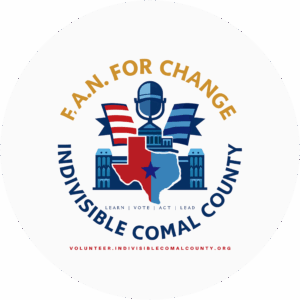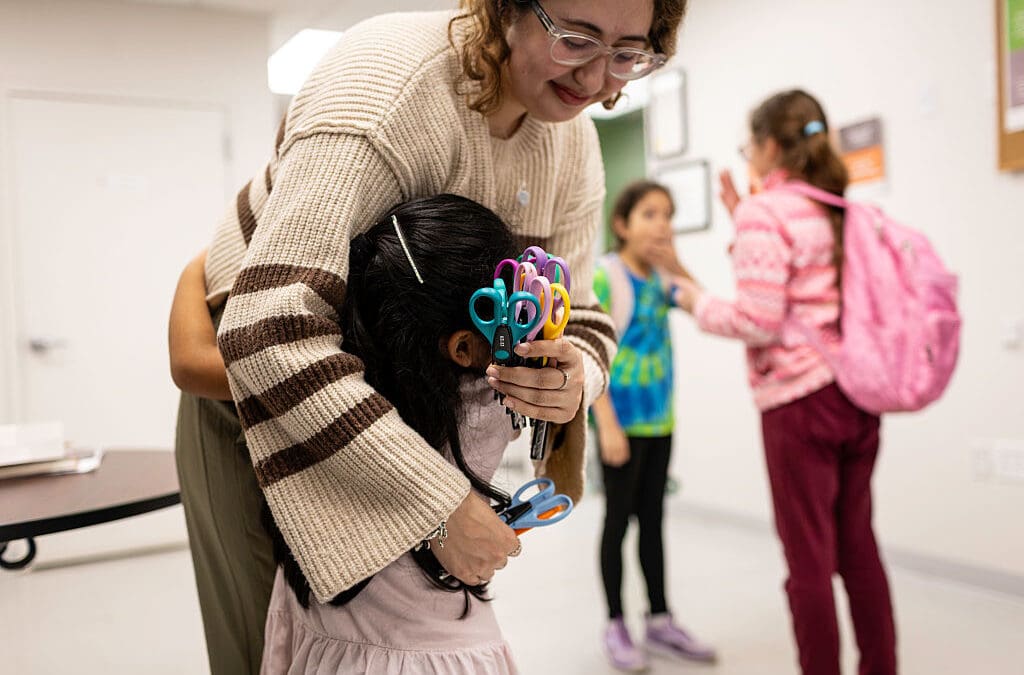
UAW President Shawn Fain on Why He Supports Tariffs
April 10, 2025
Andrew Weissmann and Patrick Gaspard: Naked Corruption
April 10, 2025Massive staff cuts at the Administration for Children and Families threaten essential programs serving millions of vulnerable Americans—especially children, families and the elderly.
The Administration for Children and Families (ACF) is not as well-known as some of the agencies within the Department of Health and Human Services, and consequently the destruction of the civil service at ACF and its impact on the public haven’t received as much coverage in the media. ACF doesn’t run Medicaid or conduct medical research. It doesn’t regulate and approve drugs. It doesn’t track infectious diseases.
But what it does—more precisely, what its people do—for the American public is invaluable. As one former ACF official told me: It supports America’s safety net.
This is largely because ACF administered $72.7 billion in grants in Fiscal Year (FY) 2024—almost all of which is distributed at Congress’ direction to programs around the country that protect vulnerable Americans: low-income children in Head Start programs, families who rely on temporary food assistance, the elderly who can’t pay utility bills during a freezing winter or blistering summer, disabled children and adults who need additional care and services beyond what their families can afford.
ACF supports refugees who need help getting started in a new country, unaccompanied immigrant children entering the U.S. on their own, and women fleeing domestic violence who need temporary shelter.
It facilitates services for victims of trafficking.
It works extensively with Indigenous people throughout the country. Much of ACF’s work involves administering programs that give states, territories and tribal nations the funds they need to improve lives and ensure that people don’t fall through the cracks in times of need.

All of those programs are endangered by the reckless and seemingly uncoordinated Reductions in Force (RIFs) that took place on April Fool’s Day, as well as the previous firings of probationary and DEI employees. In this latest round, HHS slashed approximately 500 jobs at ACF, eliminated five of ACF’s 10 regional offices and fired entire program offices, such as the Division of Energy Assistance (utility payment support) and the Division of Social Services (which administers the $2.8-billion Social Service Block Grant (SSBG) program).
Some people only learned they had been fired when their government ID wouldn’t work in the turnstiles they pass through to enter the building. People who had worked at ACF for years were not even allowed into the building to retrieve their things.
There is no one to answer questions, approve plans, provide technical assistance or troubleshoot problems in the states covered by the five eliminated regional offices.
When DEI firings, fork-in-the-road resignations and probationary employee firings are added into the mix, the footprint of ACF has fallen from 2,400 employees at the time of the inauguration to 1,500 today.
In conjunction with Congress, ACF officials during the Biden administration had increased hiring and expanded staff, especially at the regional level, to provide greater access to grantees and to ensure that major programs were sufficiently staffed to advise grantees and to provide oversight of grant programs. The cuts to ACF undermine these goals, while weakening programs that support Americans at their moments of greatest need.
Because newly RIF’ed employees were immediately placed on administrative leave, the effects of cuts are already surfacing. There is no one to answer questions, approve plans, provide technical assistance or troubleshoot problems in the states covered by the five eliminated regional offices in New York, Boston, Chicago, Seattle or San Francisco. No one in the Office of Head Start for those regions, or the Children’s Bureau, or the Office of Child Support, TANF or in grants management.

There’s no one left in ACF headquarters Office of Community Service’s Division of Social Services to monitor and approve the release of funds for hundreds of programs that states have created through the SSBG program. Such grants served 18 million people in FY 2023, over half of whom were children.
The Office of Social Services maintains a state-by state account of individuals served and the types of programs supported which demonstrates the breadth of the programs, the different uses and priorities across states and the impact of even a small amount of funds.
For instance, the state of Florida received over $160 million in FY 2023—79 percent of which went to child welfare, child protective services and foster care. In contrast, only 1 percent of its grant money went to support childcare for low-income families but that tiny amount assisted more than 792,000 children.
The list goes on.
Kansas used a portion of its funds to provide child protective services to 51,000 children.
In Illinois, according to an ACF colleague, roughly 70 per cent of disability services are funded through this grant program.
The District of Columbia uses its funds primarily for housing assistance, helping more than 29,000 people secure a place to live.
Another Office of Community Services program—the Low-Income Energy Assistance Program—provided $4.1 billion to states, territories and tribal governments to assist with the costs of energy, including utility costs, weatherization services and emergency assistance. But there’s no one to turn the lights on at the office itself and the fate of this popular program is in jeopardy.
If there’s no one there to approve the disbursement of funds, what then?
For now, even without the people to run the programs, the funds still exist. But there are already rumors of funding cuts to come, and in the frenzy to save money by slashing staff and breaking budgets, to root out alleged waste and fraud and to create a more streamlined HHS, people fear that funds will be frozen or re-allocated or simply not spent.
For example, “block” grants aren’t necessarily disbursed all at once. Funds are allocated over a period of time as outlined in the specific grant. If there’s no one there to approve the disbursement of funds, what then?
To further complicate matters, DOGE has imposed an unwieldy new system for authorizing payments from the SSBG program that could further delay or upend payments to states and territories. Without experienced professionals who understand the nuances of the individual programs or the particular needs of individual grantees, chaos is likely.
When I think about what makes America great, it is that we help people when they are down.
Larry Handerhan, a former ACF chief of staff
One ACF staffer lamented the likely harm to grantees, which translates into harms for children and families around the country. They worry that the SSBG program could be eliminated entirely: “If you care about children, if you care about vulnerable and elderly adults, if you care about folks getting back on their feet with recovery and addiction services, then it would be a terrible thing if SSGB were to go away.”
They fear that states and territories simply couldn’t afford to fund these projects alone.
On a broader level, Larry Handerhan, a former ACF chief of staff and deputy assistant secretary for administration during the Biden administration, sees the cuts at ACF as the beginning of a federal restructuring effort that will harm the poor and most vulnerable. “Applying a ‘move fast and break things’ approach fundamentally misunderstands the role of government,” which includes providing services to help people in moments of personal crisis.
“When I think about what makes America great, it is that we help people when they are down. ACF programs are a substantial part of the social safety net that allows the American dream to be the American reality, to help us recognize that disruptions can happen, but with support, you can still be there for your family. We can intervene temporarily to get you back on your feet. People don’t always appreciate the stability this provides families, and subsequently the country overall.”
Insensitivity towards federal civil servants and the haphazard elimination of their jobs is only the beginning. The absence of dedicated professional staff will make it harder to deliver vital services, but it also demonstrates deep disdain for the people who need those services. In the long run, it is families and kids who will suffer. Depending on the extent and severity of further cuts, the impact could last for generations.
Great Job Mary Giovagnoli & the Team @ Ms. Magazine Source link for sharing this story.






